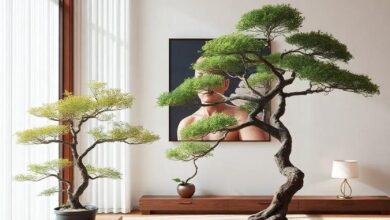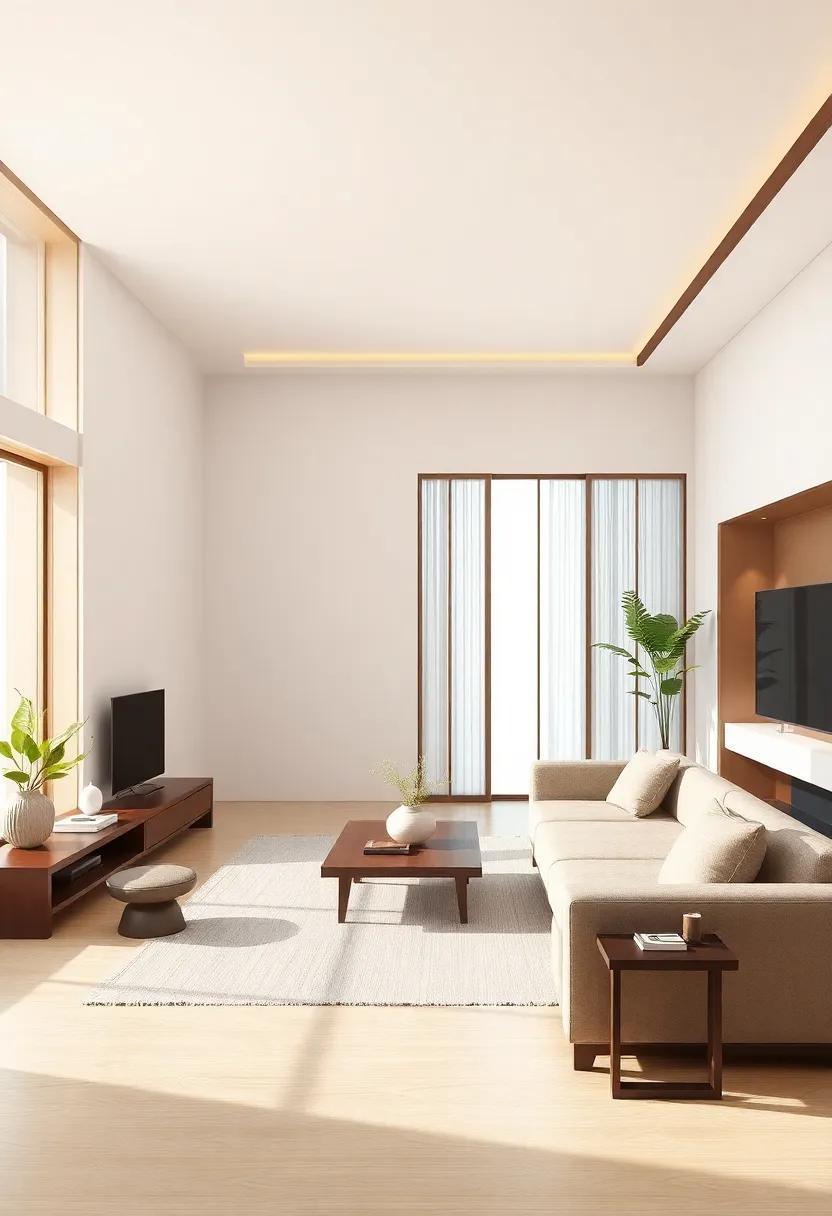
Embracing Serenity: Discovering the Art of Elegant Japanese Living Room Design
In a world that often feels cluttered and chaotic, the pursuit of tranquility has never been more essential. Enter the elegant realm of Japanese living room design, a sanctuary where simplicity intertwines with sophistication, creating spaces that exude a profound sense of calm.Rooted in centuries of tradition, this artful approach transcends mere aesthetics, inviting us to embrace a lifestyle characterized by mindful living and thoughtful craftsmanship. In this exploration of Japanese design principles, we will delve into the intricate details that define serene interiors, from the harmonious use of natural materials to the careful consideration of lighting and space. Join us on a journey to uncover how these timeless elements can transform not only our living spaces but also our state of mind, as we learn to appreciate the beauty of restraint and the elegance of serene living.
Embracing Simplicity: The Essence of Japanese Aesthetic in Living Spaces
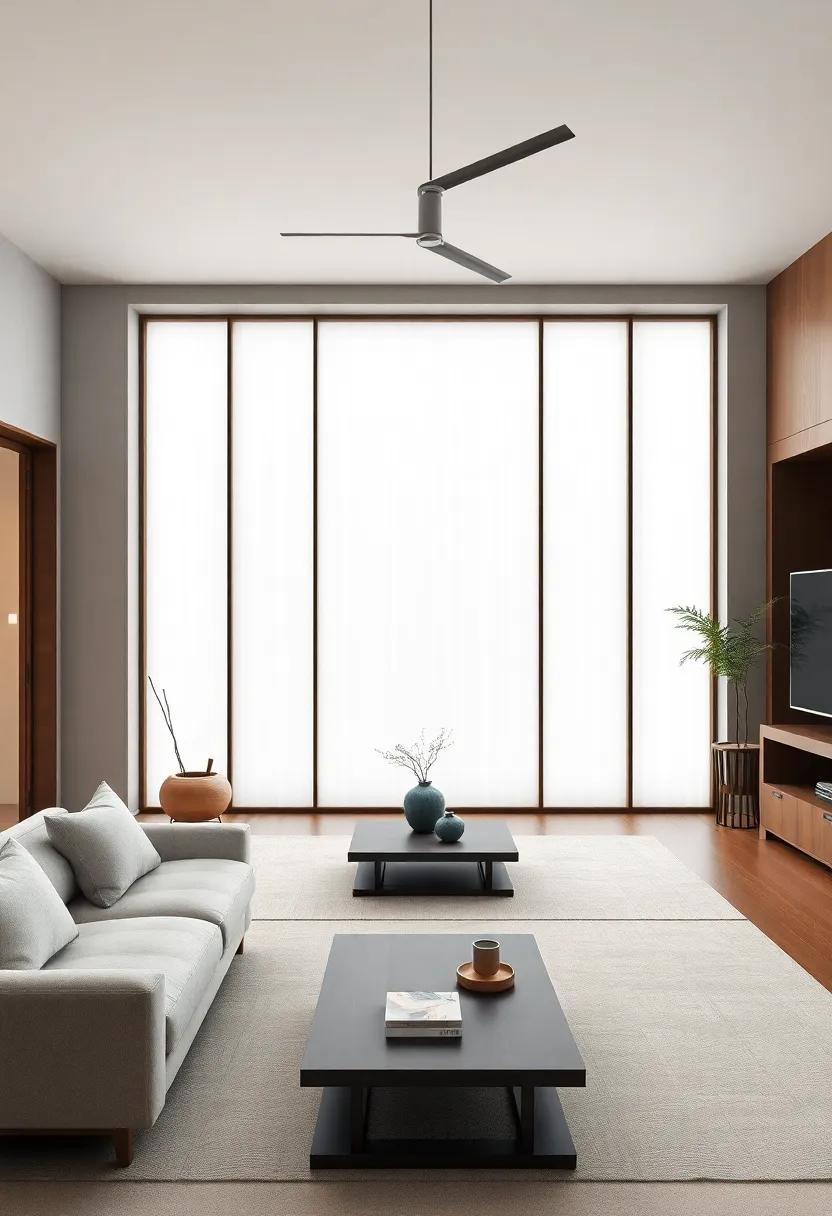
In the pursuit of a tranquil living habitat, the Japanese aesthetic offers a profound guide, characterized by its commitment to minimalism and natural beauty. Key elements of this philosophy invite you to declutter your space, allowing the eye to breathe and the mind to relax. Essential features include:
- Neutral Color Palettes: soft whites, warm beiges, and muted earth tones create a calming backdrop.
- Natural Materials: Incorporating wood, stone, and fabrics enhances connectivity with nature.
- Simple Furniture: Low-profile pieces emphasize functionality and elegance.
- Focus on Space: An open layout allows for movement and promotes a sense of serenity.
Another essential aspect of this design is the integration of nature into living spaces, blurring the line between the indoors and outdoors. The use of sliding doors—known as shoji—is particularly indicative of this philosophy, allowing natural light to flood in, while also providing versatile privacy. A harmonious balance can be achieved through the strategic placement of indoor plants,accentuating both aesthetics and air quality. Consider incorporating a small zen garden or a table centerpiece made from local flora. The thoughtful arrangement transforms daily living, fostering a sense of peace and craftsmanship found in every detail. For more inspiration, explore the beauty of Japanese design at japanesepottery.net.
the Harmony of Nature: Incorporating Natural Elements into Your Design
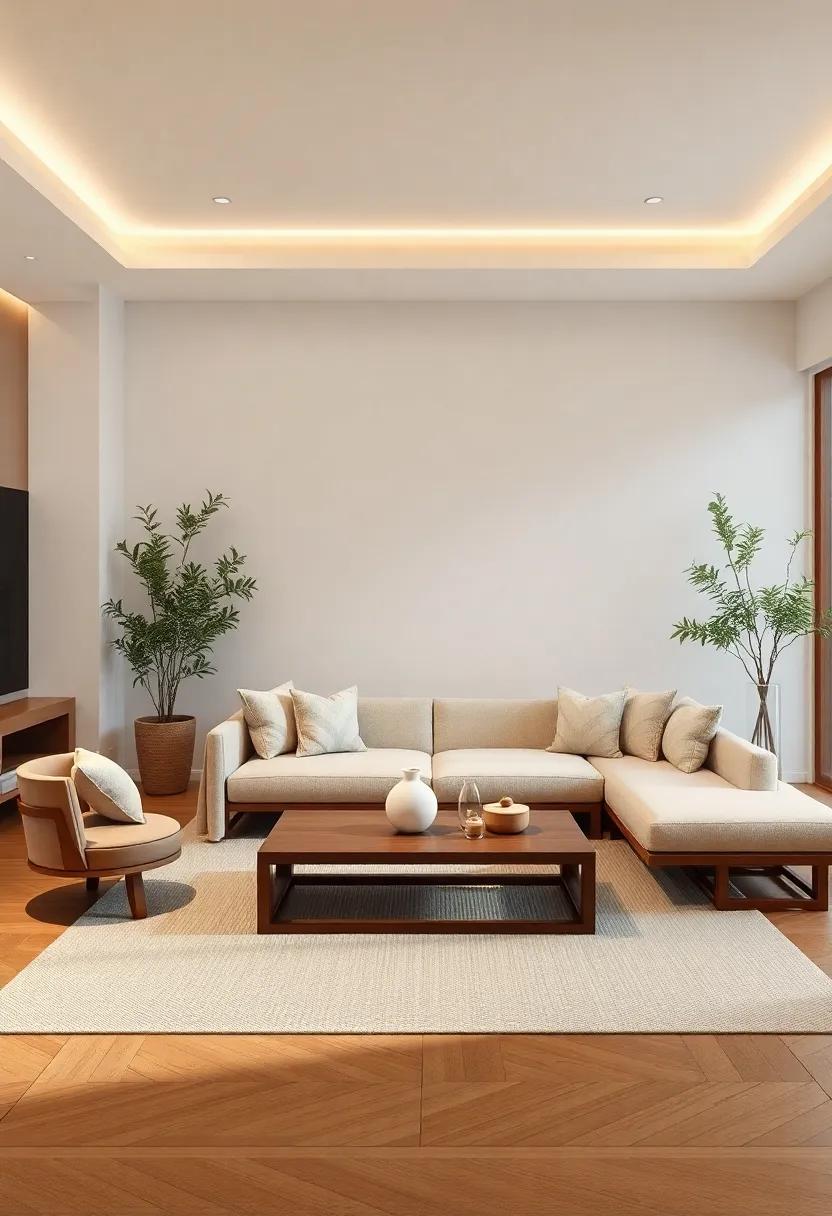
Incorporating natural elements into your design creates a profound connection to the serenity of the outside world. Japanese living room aesthetics exemplify this harmony through the integration of materials and textures that evoke a sense of tranquility. Consider using wood, stone, and plants in your design to capture the essence of nature. The subtle warmth of bamboo flooring or the rustic charm of reclaimed wood furniture can transform the atmosphere into a calming retreat. Adding elements like indoor bonsai or minimalist arrangements of Ikebana can create focal points that embody quiet elegance while connecting the space to the changing seasons.
The palette in elegant Japanese design often features soft, neutral tones inspired by the natural landscape. Shades of taupe, soft greens, and gentle blues evoke the calming presence of earth and water, allowing each element of the room to breathe and resonate in harmony. To enhance this effect, consider the use of sheer fabrics for window treatments that invite in natural light while creating a soft diffusion. incorporating a simple table can also be beneficial, focusing on essential items, reducing clutter, and inviting mindfulness. A thoughtfully crafted design will cultivate a serene environment conducive to relaxation and reflection. For more inspiration, explore Architectural Digest to see how others embrace the beauty of nature in their spaces.
The Power of minimalism: Creating Space with Sparse Furnishing Choices
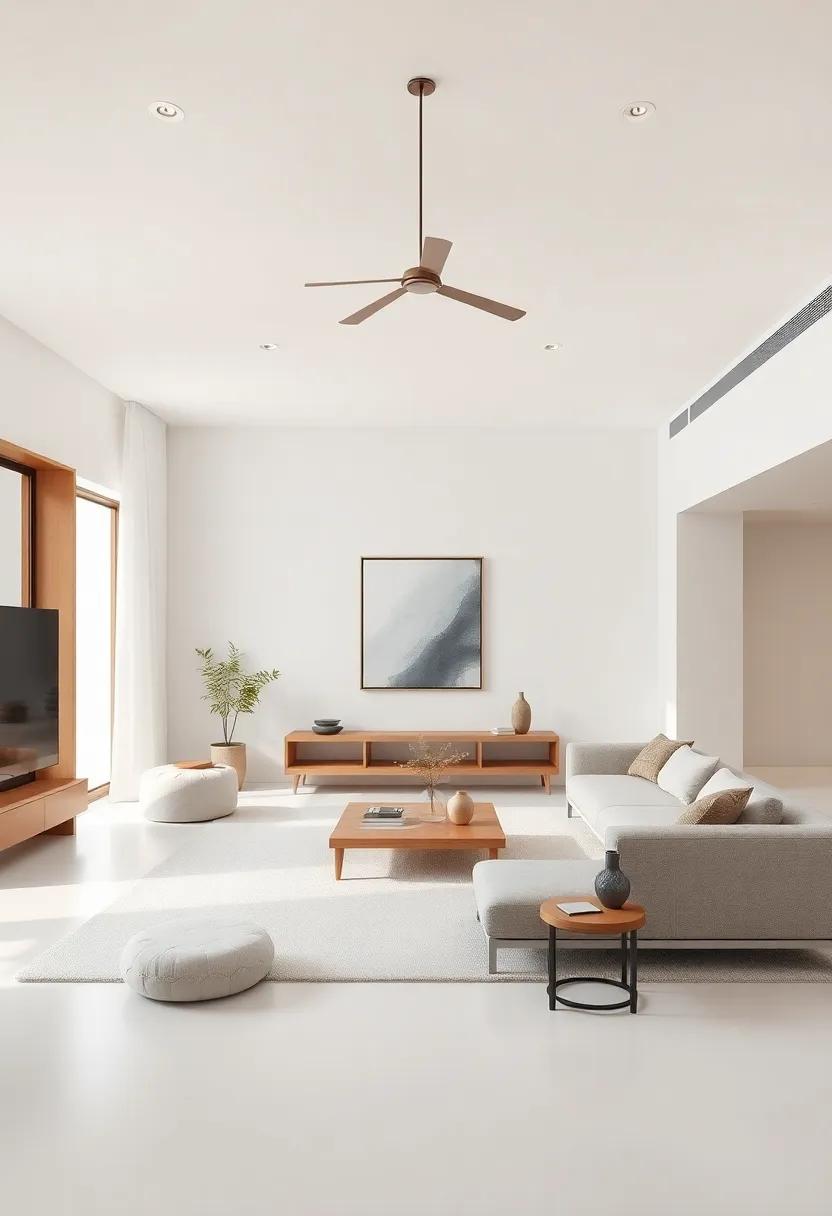
Adopting a minimalist approach in interior design promotes tranquility and simplicity, qualities deeply rooted in Japanese living. By strategically selecting furnishings, you create a serene environment that calms the senses. This style emphasizes open spaces, natural light, and clean lines, allowing each piece to serve a purpose while contributing to the overall aesthetic. Consider these core elements when integrating minimalism into your design:
- Natural Materials: Opt for furniture crafted from wood, bamboo, or stone to connect with nature.
- Neutral Color Palettes: Use soft whites, muted grays, and earthy tones to establish a soothing ambiance.
- functional Design: Choose pieces that merge beauty with practicality, such as a low-profile table that doubles as a storage unit.
By minimizing clutter and focusing on essential items, the design not only enhances the visual appeal but also promotes mindfulness. A thoughtfully arranged living room can become an oasis of peace, inviting relaxation after a long day. Incorporate elements of Japanese aesthetics, such as:
| Element | Description |
|---|---|
| Tatami Mats | Natural fiber mats that encourage grounding and comfort. |
| Sliding Doors | Shōji screens that enhance spatial flow and light while preserving privacy. |
| Zen Plants | Sparse greenery,such as bonsai or succulents,that add life without overwhelming. |
for further inspiration on minimalism, consider exploring resources like Architectural Digest, which offers extensive insights into elegant spatial designs.
Inviting Tranquility: Soft Color Palettes for a Serene Atmosphere
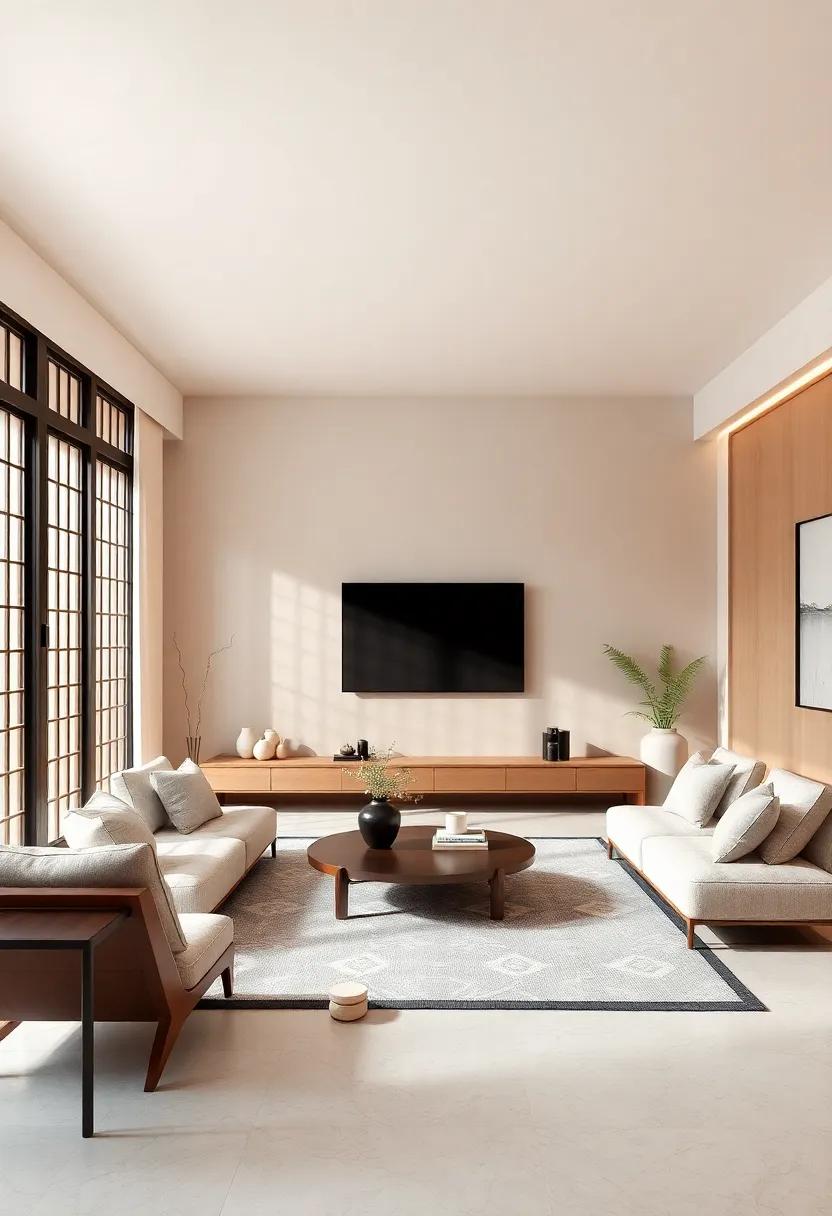
Creating a peaceful retreat within your living space can be achieved through careful selection of color palettes that evoke calmness and harmony. Soft hues such as powder blue, pale beige, and gentle sage not only enhance the aesthetic appeal but also promote a soothing ambiance. These colors, reminiscent of nature, blend seamlessly with customary Japanese aesthetics, allowing for a serene escape from the hustle and bustle of daily life. When combined with natural materials like wood and stone, they generate a tranquil environment that invites relaxation and mindfulness.
Incorporating these serene tones into your design can be done in various ways, such as:
- Accent Walls: A soft, muted color can serve as a backdrop for minimalist artwork or traditional Japanese screens.
- Textiles: Use cushions and throws in delicate patterns that complement the overall palette while adding texture.
- Live Plants: Enhancing the space with greenery in neutral pots can ground the color scheme, promoting a sense of tranquility.
Moreover, you may find it beneficial to utilize color swatches to visualize how these palettes interact with your existing furnishings. Tools from design websites can definitely help you explore and experiment with various combinations. For more inspiration on creating a serene atmosphere,consider visiting Architectural Digest.
The Art of Balance: Achieving Symmetry in Your Living Room Layout
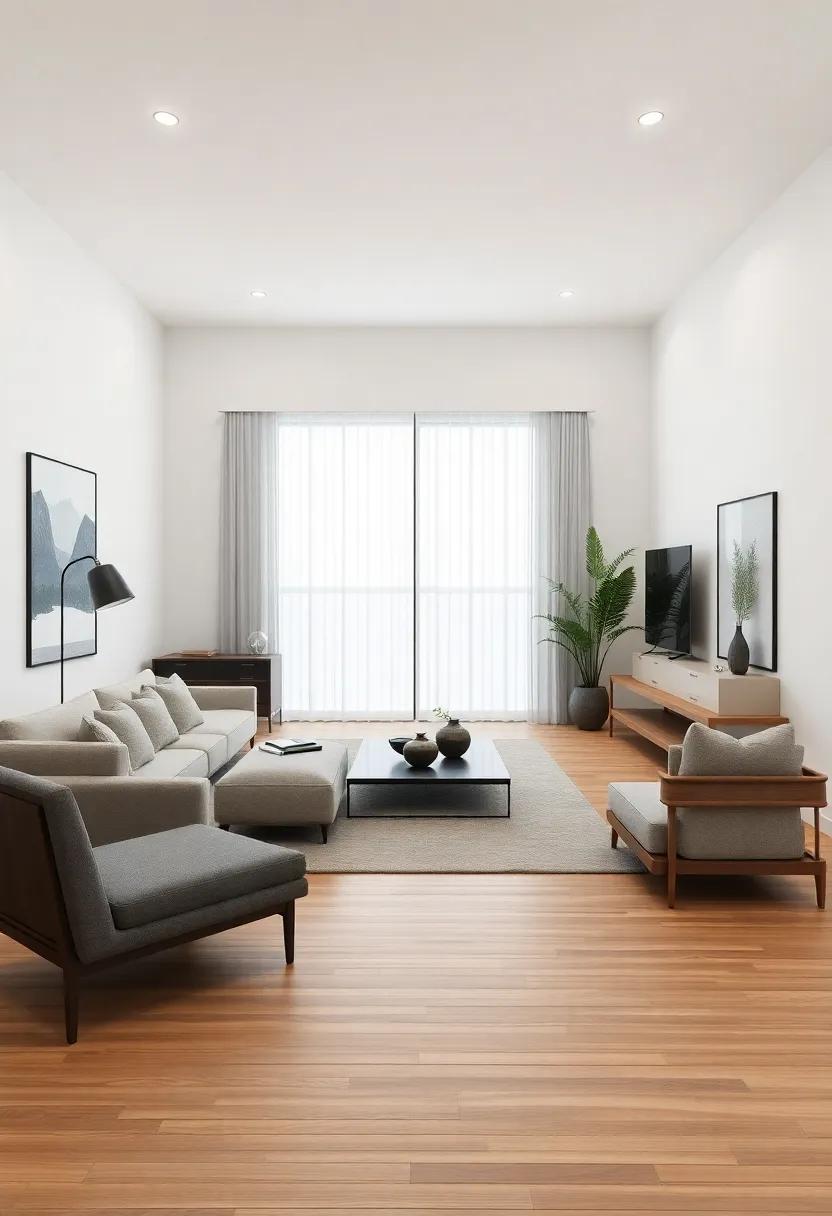
In the pursuit of a harmonious living space, achieving symmetry is essential. Start by positioning your furniture to create an inviting atmosphere. This can include a symmetrical arrangement of chairs flanking a central coffee table or two matching lamps placed on either side of a couch. Key elements to consider are:
- Color Palette: Stick to neutral tones with occasional pops of color to maintain a cohesive look.
- Furniture Scale: Choose pieces that complement each other in size and style, enhancing the feeling of balance.
- Functional Layout: Ensure pathways are clear and each area serves a purpose to avoid clutter, which disrupts symmetry.
Natural elements play a vital role in this design philosophy. Incorporating plants, wooden accents, and soft textiles can help soften angles and create a serene environment. Consider the following aspects as you arrange your living room:
- Textural Variety: Include various textures, like silk cushions and wool throws, to add depth while maintaining unity.
- Visual Anchors: use rugs to define spaces, grounding furniture and guiding the eye throughout the room.
- Artful Displays: Showcase art or decorative objects that mirror each other in size or shape to enhance symmetry.
| Element | purpose |
|---|---|
| Plants | Add life and contrast |
| Lamps | Provide balanced lighting |
| Accent Wall | Create a focal point |
for more inspiration on achieving balance in your living spaces, visit Decoist and explore a wealth of ideas.
Emphasis on Craftsmanship: Celebrating Traditional Japanese Joinery Techniques
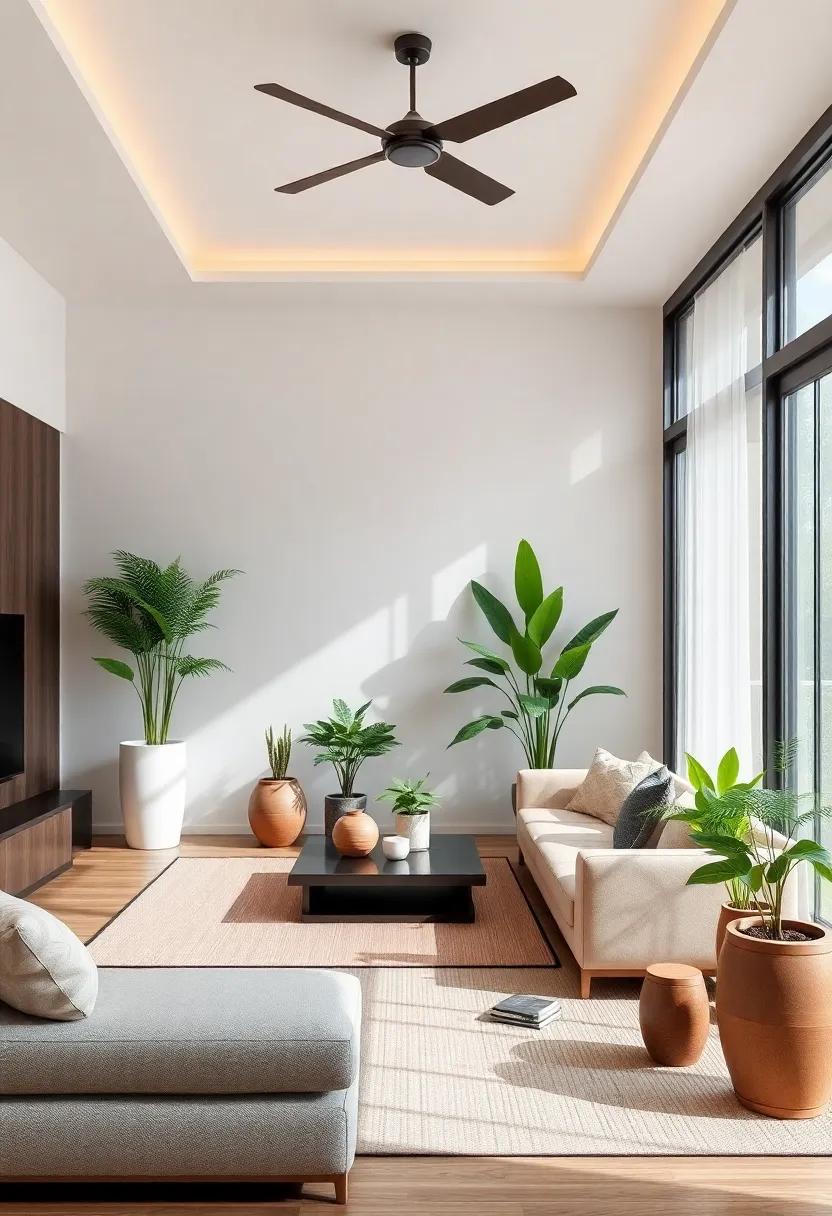
At the heart of Japanese aesthetics lies a profound respect for craftsmanship, particularly evident in traditional joinery techniques that have been meticulously passed down through generations. These skills are not merely functional; they are an expression of art that enhances the beauty and serenity of living spaces. The use of intricate wood joints—such as tsuki, kasumi, and shachi-sugi—ensures that pieces fit seamlessly without the need for nails, thereby maintaining the natural integrity of the wood. The result is a harmonious balance of form and function, where every joint signifies a commitment to quality and attention to detail. Characteristics of japanese joinery include:
- Durability: Traditional methods produce strong, lasting structures.
- Flexibility: Designs allow for slight movement, essential for coping with natural elements.
- Aesthetic Appeal: Each joint adds to the overall visual harmony of the space.
The incorporation of such joinery techniques into modern design invites tranquility and stability into the home. These details are often found in furniture, wall panels, and tatami mats, which evoke a sense of grounding and connection to nature. Furthermore, when combined with features like fusuma (sliding doors) and shoji (paper screens), these techniques allow for multifunctional spaces that can be easily adapted to suit various moods and activities. The enduring charm of traditional craftsmanship in Japanese design serves as a reminder of the beauty of simplicity and attention to detail, encouraging us to savor each moment within our living spaces. To explore more about traditional Japanese craftsmanship, visit Japanese Pages.
timeless Textiles: Selecting Fabrics that Exude Elegance and Comfort
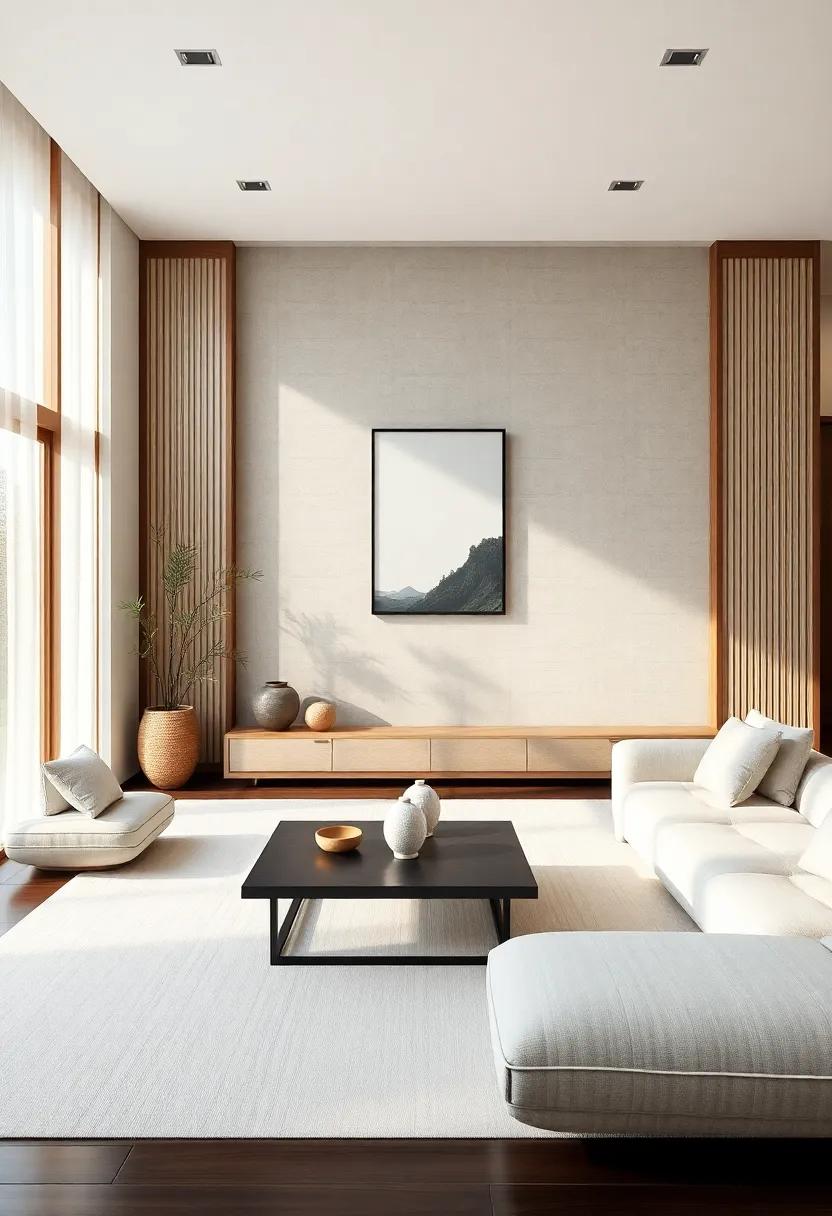
Choosing the right textiles is crucial in crafting a living space that balances elegance with comfort. Look for materials that offer both visual appeal and sensory delight. Fabrics such as silk, linen, and cotton can transform a room into a serene oasis. When selecting your textiles, consider the following qualities for a harmonious experience:
- Texture: Opt for fabrics that feel soft and inviting against the skin.
- Color Palette: Choose muted tones or natural hues to maintain a calming atmosphere.
- Durability: Select materials that withstand wear and tear while retaining their elegance over time.
Incorporating these fabrics can enhance the visual composition of your living area, ensuring every piece contributes to an overall sense of tranquility.A Japanese-inspired aesthetic frequently enough embraces simplicity and minimalism, utilizing textiles that promote relaxation. Such as, consider placing a plush tatami mat on the floor, or adorning your seating with traditional cushions. Pairing these elements with a sleek wooden coffee table can create a harmonious balance of nature and craftsmanship. For further inspiration on textile selection and Japanese design principles, you can explore Japanese Living.
Light and Shadow: Harnessing Natural Light for an Inviting Glow
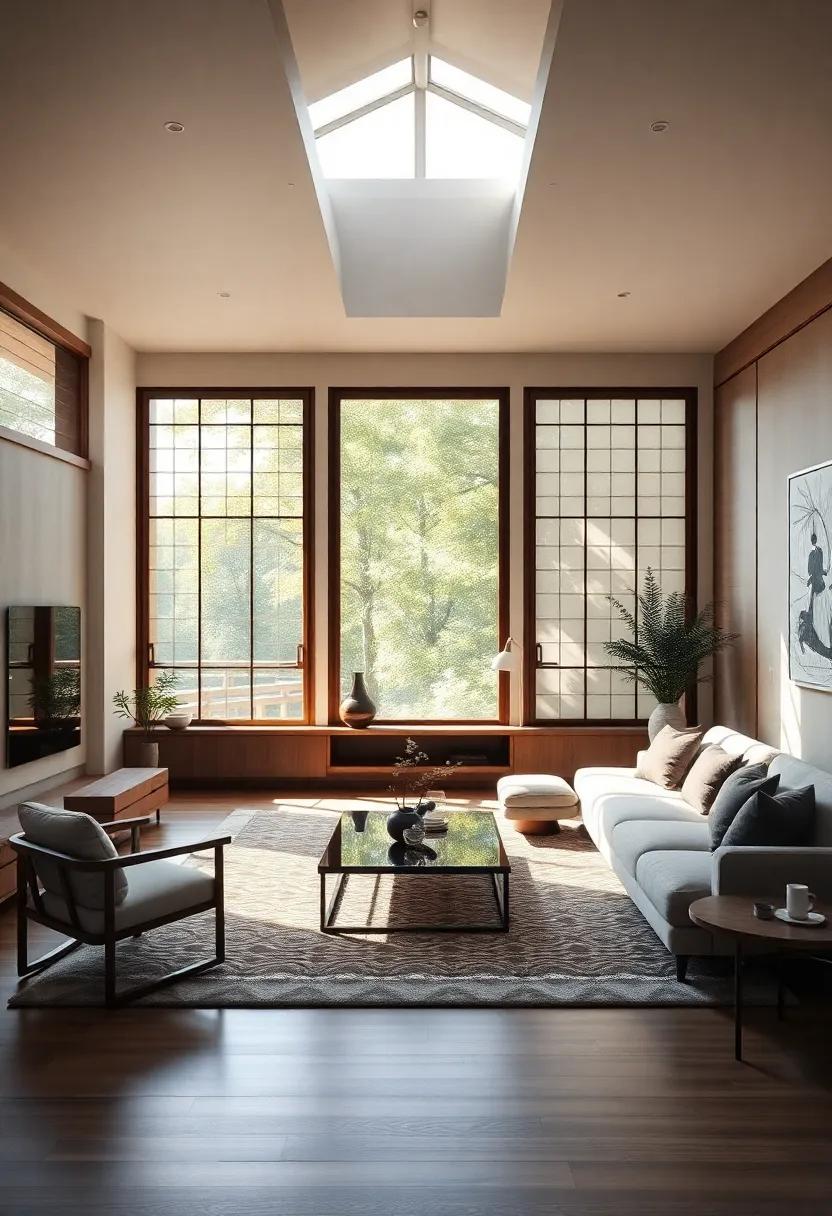
In the heart of an elegant Japanese living room,the interplay of light and shadow creates a tranquil ambiance,inviting an effortless connection with nature. Natural light acts as a catalyst, enhancing the simplicity and harmony of the decor while emphasizing the beauty of traditional elements. Incorporating large sliding shoji screens or strategically placed windows allows sunlight to filter in gently, casting patterns that dance across tatami mats and finely crafted wooden furniture. This fluid interaction between light and shadow helps to define spaces, making them feel more expansive and serene.
To achieve this inviting glow, consider these essential elements:
- Translucent materials: Utilize shoji screens or sheer curtains that soften the light.
- Earthy tones: Opt for natural colors in furnishings to reflect light beautifully.
- Indoor plants: Integrate greenery to enhance the connection with nature and filter light.
- Strategic placement: Position furniture to take advantage of sunlight without obstructing pathways.
| Material | Effect on Light |
|---|---|
| Shoji screen | Softens and diffuses light |
| Wood | Warmth and texture |
| Paper lanterns | Creates a cozy glow |
For further inspiration on utilizing natural light to enhance your living space, explore Architectural Digest for expert design tips and insights.
The Role of Tatami: Choosing the Right Flooring to Enhance serenity
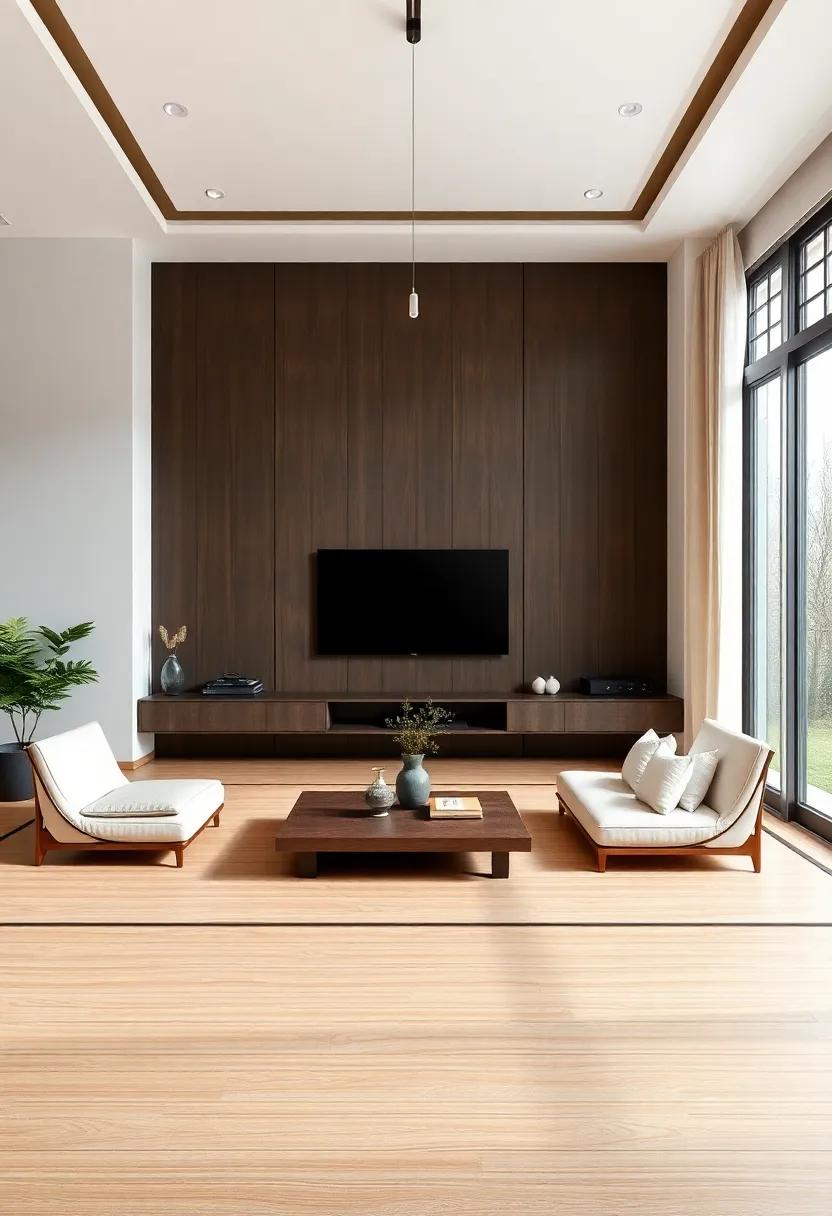
Tatami, the traditional flooring of japanese homes, serves not only as a physical foundation but also as an essential element in creating an ambiance of tranquility. With its natural rice straw filling and soft, woven surface, tatami provides a warmth and sustainability that modern materials frequently enough lack. When choosing tatami for your living space,consider the size and layout of the room to maximize its soothing effects. Natural light plays a vital role; therefore, positioning tatami where sunlight filters in can enhance the room’s serenity. Select tatami mat colors that harmonize with your overall design, promoting a cohesive feel that invites relaxation and mindfulness.
Incorporating tatami involves more than just aesthetics; it influences how you interact with your space. With its gentle surface, tatami encourages a lifestyle centered on sitting, lounging, and reflecting.To elevate this experience, consider the following elements when designing your serene environment:
- Complementary decor: Choose low-profile furniture that complements the natural texture of tatami.
- Layered textiles: Add cushions or throws made from natural fibers to enrich comfort.
- Zen elements: Integrate plants or minimalist artwork to evoke harmony.
Furthermore, when choosing tatami mats, it is advisable to explore options that are made from organic materials, ensuring a healthier indoor environment. For those looking to expand their selection of tatami,resources such as tatami.com offer numerous styles and materials that can cater to specific aesthetic and functional needs. This not only enhances the visual appeal of your space but also enriches your living experience with an authentic touch of tradition.
indoor Gardens: Incorporating Planters and Greenery for Fresh Air
Transform your living space into a tranquil retreat by thoughtfully introducing planters and greenery. Elegantly designed Japanese living rooms often feature an essential element: the harmony of nature with contemporary aesthetics. By selecting a variety of plants, you can create a serene atmosphere while purifying the air around you. Consider incorporating planters that complement your space, such as:
- bonsai Trees: Symbolizing patience and elegance, these miniature trees reflect the beauty of nature.
- Ferns: Soft, feathery leaves offer a lush contrast to minimalist decor.
- peace Lilies: These elegant flowers not only beautify the room but also filter indoor air pollutants.
To further enhance your indoor garden, consider using decorative planters made from materials like ceramic or bamboo, which align with the natural theme of Japanese design.Grouping plants in varying heights and sizes can create a dynamic visual interest,while a simple water feature may bring calming sounds that foster tranquility. You can also utilize Better Homes & Gardens for more inspiration on creative ways to integrate greenery into your living space.
The Beauty of Ikebana: Arranging Flowers with Elegance and Intent
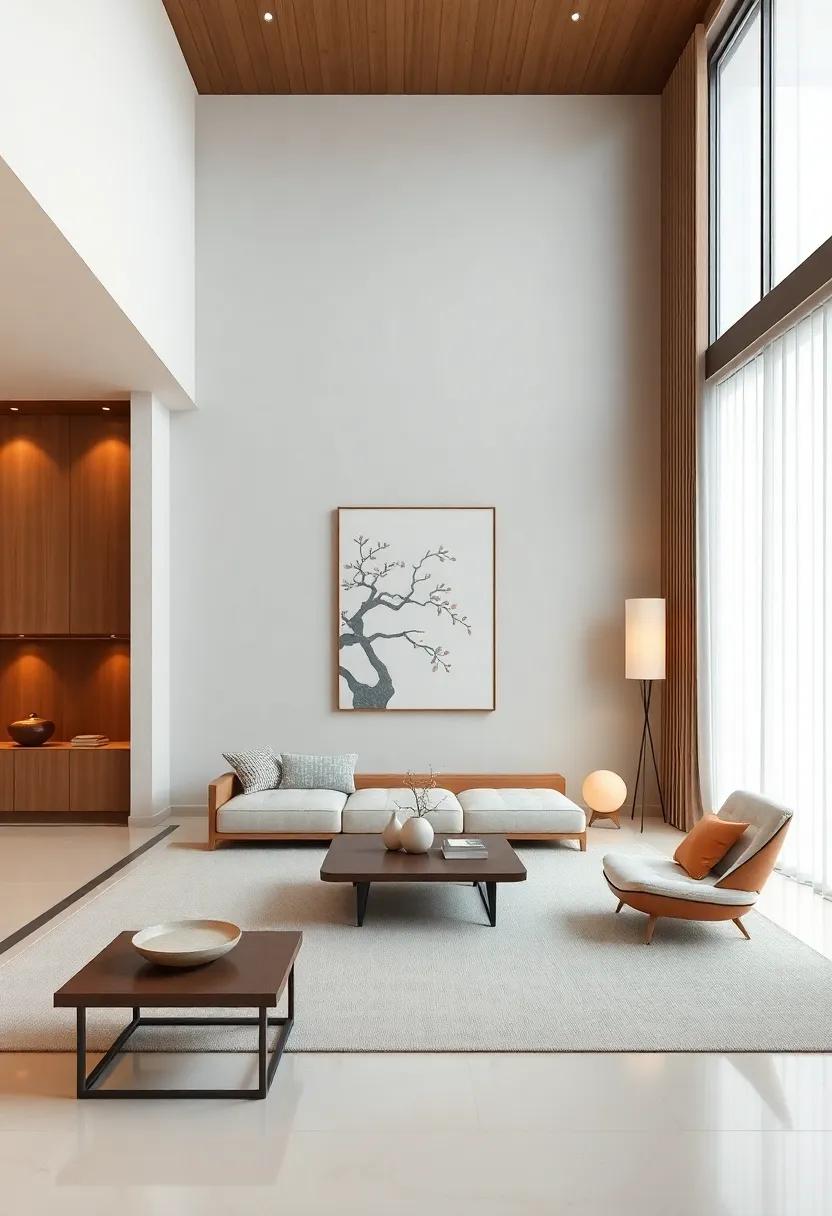
The art of arranging flowers in Ikebana transcends mere aesthetics; it embodies a philosophy deeply rooted in harmony and balance.Each arrangement is a reflection of nature, capturing its essence while conveying emotions through the careful selection of elements.this practice emphasizes lines, balance, and space, encouraging the creator to thoughtfully consider each stem and leaf’s placement. Key principles that guide Ikebana include:
- Asymmetry: Unlike traditional floral arrangements that favor symmetry, Ikebana embraces irregularity, which draws the eye and evokes a sense of tranquility.
- Minimalism: Less is often more; by focusing on a few carefully chosen components, the beauty of each piece is heightened, allowing the viewer to appreciate the subtleties.
- Seasonality: Incorporating seasonal elements connects the arrangement to its environment, celebrating the changing beauty of nature.
Creating an atmosphere conducive to contemplation and relaxation, Ikebana encourages a mindful approach to living. In a Japanese-inspired living room, an Ikebana arrangement serves as a stunning focal point while embodying the principles of Zen. Integrating this floral artistry can enhance the overall aesthetic in various ways, such as:
| Aspect | Benefit |
|---|---|
| Color | adds vibrancy while maintaining a serene palette. |
| Form | Shapes and contours inspire soft, inviting spaces. |
| Texture | creates depth, captivating the viewer’s attention. |
Through Ikebana, one does not just decorate a space; they curate a sanctuary characterized by elegance. To explore more about this timeless discipline, visit Japanese tea. The understanding of Ikebana offers a deeper thankfulness of Japanese culture and its emphasis on the transient beauty of life.
Focal Points: Selecting the Right Art and Accents for Visual Impact
Choosing the right art and accents can transform a living space into an oasis of tranquility,especially in a Japanese-inspired design. Minimalism plays a pivotal role in selecting art; you should aim for pieces that speak to nature and simplicity. Consider using art that integrates natural elements, such as landscapes, florals, or abstract pieces inspired by traditional Japanese aesthetics. Neutral color palettes with soft earth tones will elevate the overall ambiance and foster a calm environment. When it comes to placement, opt for larger canvases as focal points, while smaller pieces can complement them by creating a harmonious balance throughout the room.
Accents such as ceramics, wooden sculptures, and textiles should echo the serene theme of your living space. Japanese-style decor frequently enough features handcrafted items that showcase the beauty of imperfection, so select vases and bowls that highlight artisanal craftsmanship. When accessorizing, consider the following to enhance visual impact:
- Use asymmetrical arrangements to evoke balance.
- Incorporate natural materials such as bamboo, linen, and stone.
- Include greenery with bonsai or elegant potted plants to bring life indoors.
These elements not only create visual interest but also contribute to a sense of peace and mindfulness that is central to Japanese living. For more inspiration on selecting art and home accents, delve into Apartment Therapy for creative ideas.
Seamless Transition: Blending Indoor and Outdoor Living Spaces
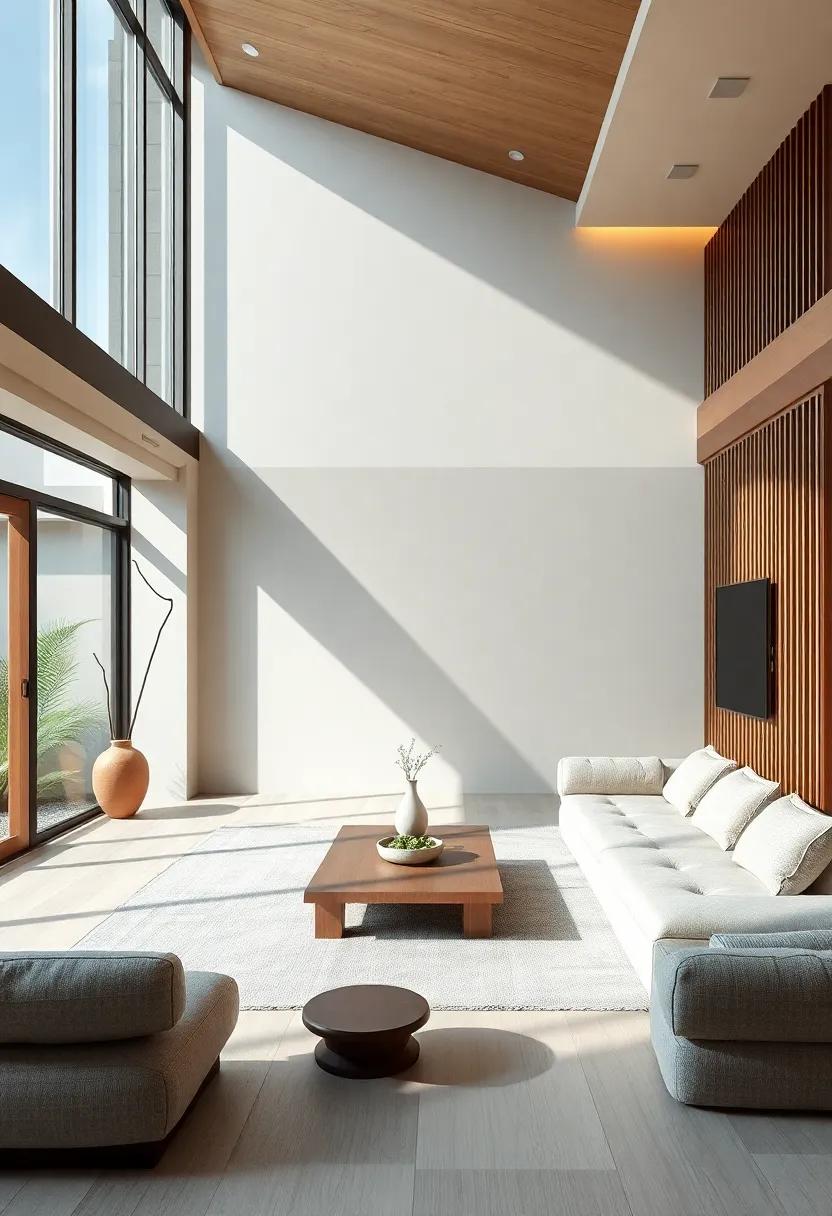
Connecting the indoors with the outdoors fosters a sense of serenity that is integral to Japanese living room design. Large sliding glass doors can open up spaces, allowing natural light to flood the interior while providing unobstructed views of the lush, calming landscapes outside. Incorporating natural materials such as wood, stone, and bamboo not only enhances this connection but also reflects the tranquil aesthetics synonymous with Japanese culture.Consider using tatami mats inside and stone pathways outside to create a seamless flow, inviting nature into every corner.
To further enhance this harmonious blend, prioritize minimalistic furniture that is low to the ground, echoing traditional Japanese design. Strategically placed indoor plants can bridge the gap between spaces, while the use of neutral color palettes creates a calm backdrop.Incorporating water features or rock gardens within sightlines can also deepen the connection to nature. By thoughtfully designing these areas, one can curate a living experience that embodies elegance and peace, reminiscent of the serene Japanese lifestyle. For inspiration on integrating more outdoor elements into your living spaces,visit Architectural digest.
Personal Retreats: Designing Cozy Nooks for Reflection and Relaxation
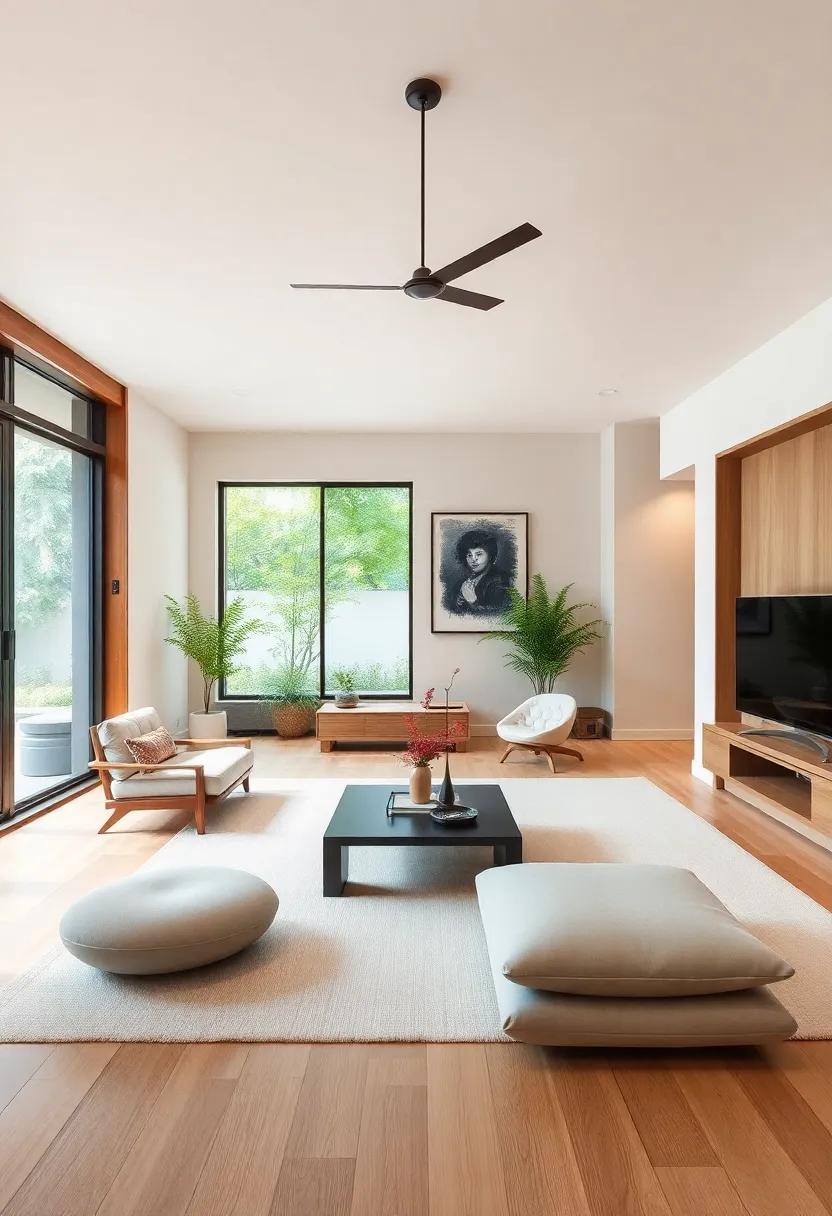
creating a personal retreat within your living space is an enchanting way to foster moments of solitude and reflection. Incorporating natural materials such as bamboo, stone, and wood can instantly transform any nook into a serene escape. utilize low-profile furniture to promote a sense of openness, while soft textiles like linen and cotton introduce comfort and warmth. Consider including elements like a small indoor water feature or a zen garden to create a peaceful ambiance. enhance the space with subtle lighting, perhaps from paper lanterns or soft LED strips, inviting a gentle glow that soothes the mind and body.
To further personalize your cozy retreat, think about adding a few thoughtfully chosen decor pieces that reflect tranquility. A shoji screen can provide privacy while still allowing light to filter through. Incorporate art that evokes nature, such as landscapes or minimalist prints, to inspire calm feelings. Consider a small bookshelf stocked with your favorite reads or a spot for meditation essentials. The overall aim is to cultivate a harmonious environment that encourages stillness and contemplation, making it a perfect corner for self-finding. For more inspiration on creating a peaceful atmosphere, visit japaneselifestyle.com.au.
Essential Furniture: Choosing Simple Yet Functionally Elegant Pieces
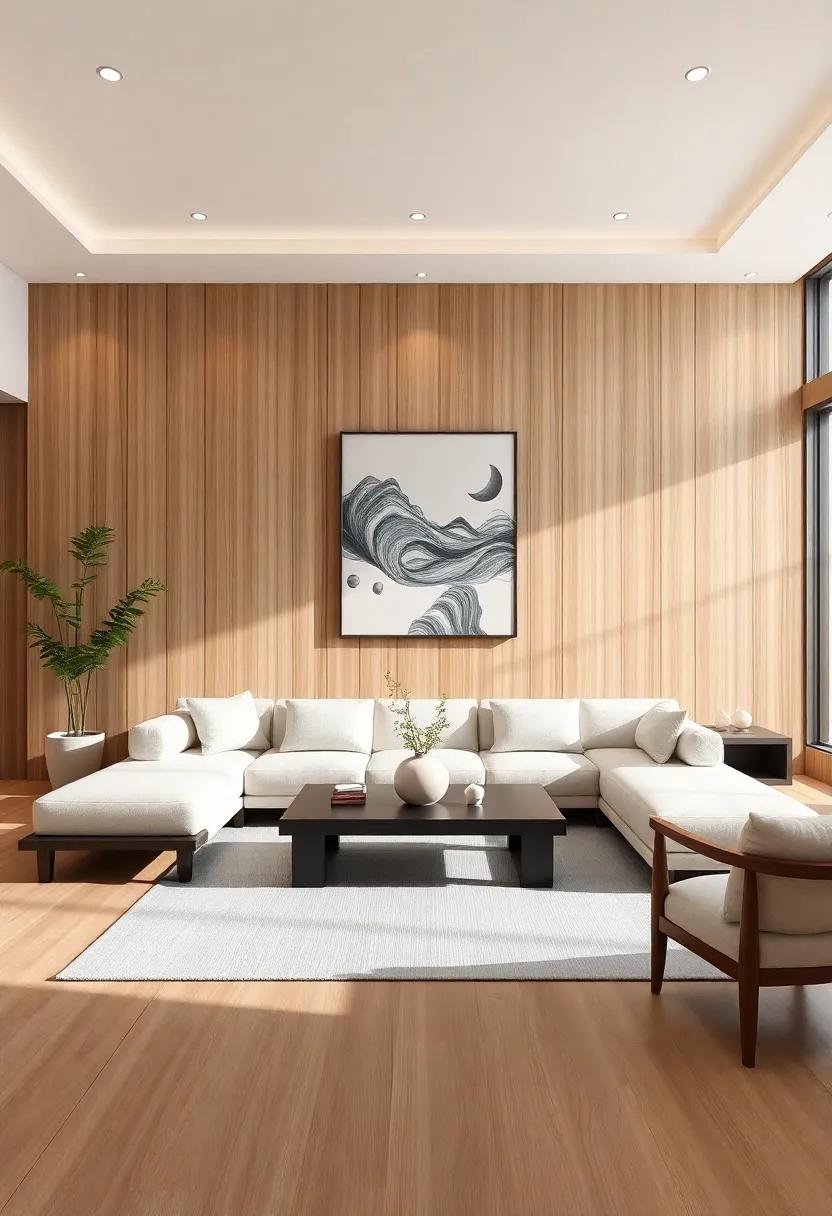
When selecting furniture for a serene japanese living room, the focus should be on simplicity and functionality, creating a harmonious environment.Consider pieces that blend seamlessly with nature while promoting a sense of tranquility. Some essential furniture ideas include:
- Low-profile sofas that encourage a communal atmosphere.
- Multifunctional coffee tables that can serve as storage and surfaces for tea ceremonies.
- Simple wooden side tables that mirror the natural textures found in the outdoors.
- Futons or tatami mats that can easily transition between day and night use.
Additionally, incorporating understated aesthetics can elevate the overall ambiance of the room.Choose materials that promote peace, such as:
| material | Description |
|---|---|
| Wood | Warmth and natural beauty, frequently enough left unfinished. |
| Rice Paper | Softens light, adding an ethereal quality to the space. |
| Cotton | Durable yet soothing fabrics for cushions and throws. |
By thoughtfully choosing these simple yet elegant furnishings, you can cultivate a living room that not only serves its purpose but also embodies the essence of Japanese design philosophy. For more inspiration on minimal aesthetic living,visit Architectural digest.
Choosing the Right Lighting: Creating an Ambiance Through Fixtures
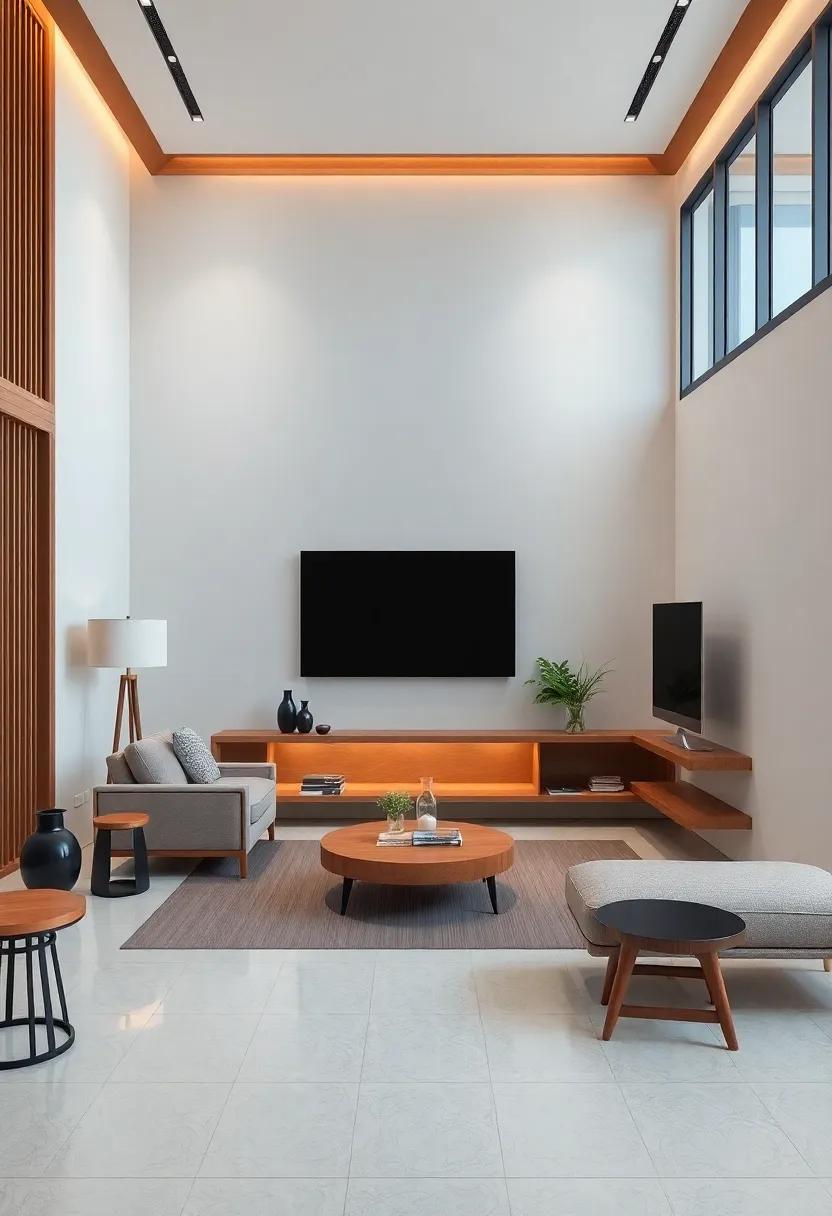
In the pursuit of calmness and tranquility that defines elegant Japanese living room design, the choice of lighting fixtures plays a pivotal role. Soft, diffused light not only enhances the aesthetic appeal but also creates a serene atmosphere. Consider integrating paper lanterns, shoji screens, and floor lamps that cast a warm glow, echoing the natural ambiance of a traditional tea house. These fixtures can beautifully complement minimalist furniture and Japanese art pieces. By choosing dimmable options, you can easily adjust the luminosity throughout the day, allowing your space to transform from bright and energizing to soft and cozy for relaxation.
The strategic placement of lighting is equally significant in crafting that perfect atmosphere. Utilize a combination of ambient, task, and accent lighting to offer versatility. Here’s a quick guide to help you select the right type of lighting for your space:
| Lighting Type | Description |
|---|---|
| Ambient | Provides overall illumination; ideal for everyday activities. |
| Task | Focused light for specific tasks such as reading or working. |
| Accent | Highlights art pieces or architectural details, enhancing visual interest. |
Emphasizing the textures and simplicity of Japanese aesthetics, consider using materials like bamboo, wood, and rice paper in your fixtures. This careful selection invites a sense of nature indoors, fostering a connection to the peaceful environment outside. For further inspiration on Japanese interior design, check out japanesestyle.com.
Zen Influences: Elements of Peace that Define Japanese Style
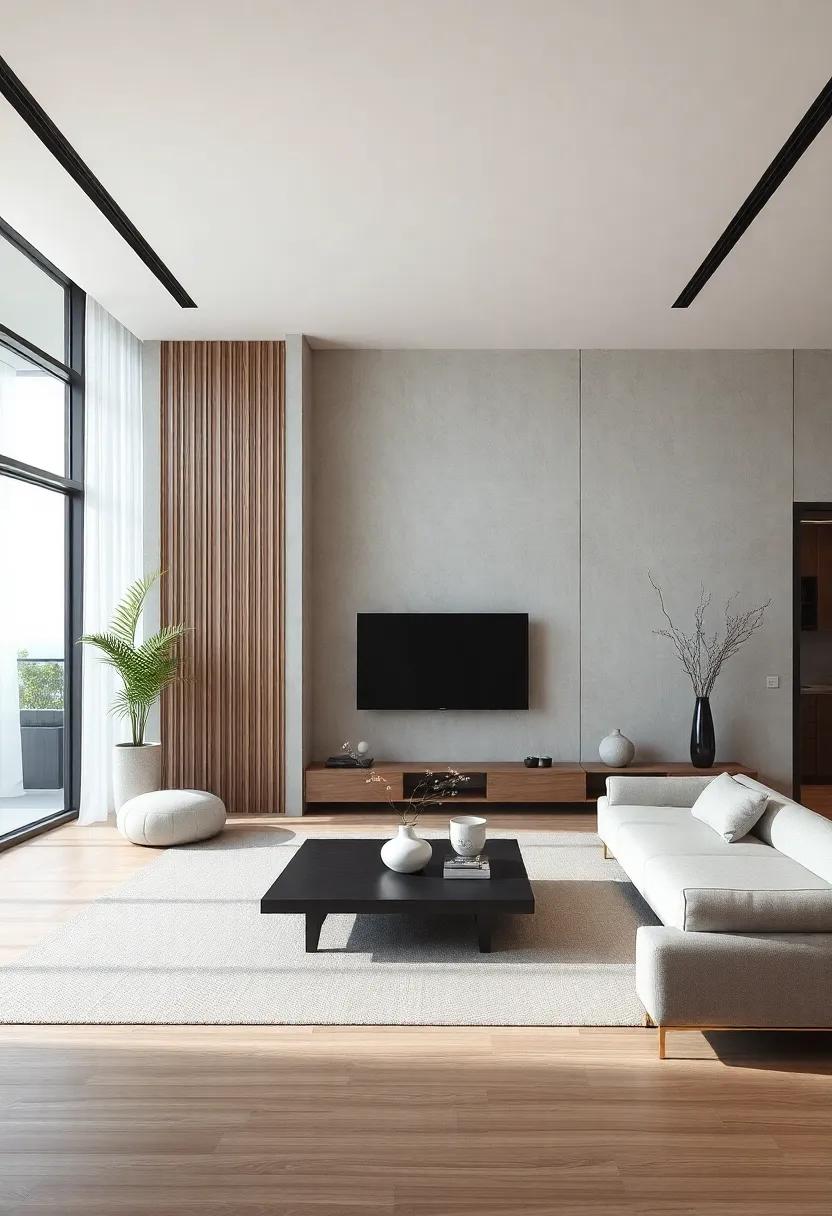
Japanese design ethos is deeply rooted in Zen philosophy, embracing simplicity, natural materials, and an articulation of space that invites tranquility. This approach aims to create an atmosphere where one can retreat from the chaos of everyday life, establishing a harmonious balance between aesthetics and function. Natural elements take center stage, often showcased through:
- Wooden furnishings crafted from unrefined materials like ash or cedar, bringing the warmth of nature indoors.
- Minimalist color palettes, often featuring soft earth tones, which promote relaxation and a sense of calm.
- Sliding doors and screens that blur the boundaries between indoor and outdoor spaces, encouraging a feeling of openness.
Moreover, the intentional use of space plays a crucial role, allowing each item to breathe and contribute to the overall aesthetic. Zen gardens or tactile items, such as smooth stones and delicate bonsai trees, provide a visual and sensorial interplay that elevates the room’s serenity. Incorporating elements of lighting that mimic natural sources, like paper lanterns or soft colored bulbs, further enhances the ambiance, casting comforting shadows and inviting warmth.Understanding and integrating these principles not only transforms a living area but also fosters a lifestyle that appreciates the beauty in simplicity. To dive deeper into these inspirations, explore Japan Today for more insights.
Cultural Touchstones: Infusing Traditional Japanese Decor into Modern Spaces
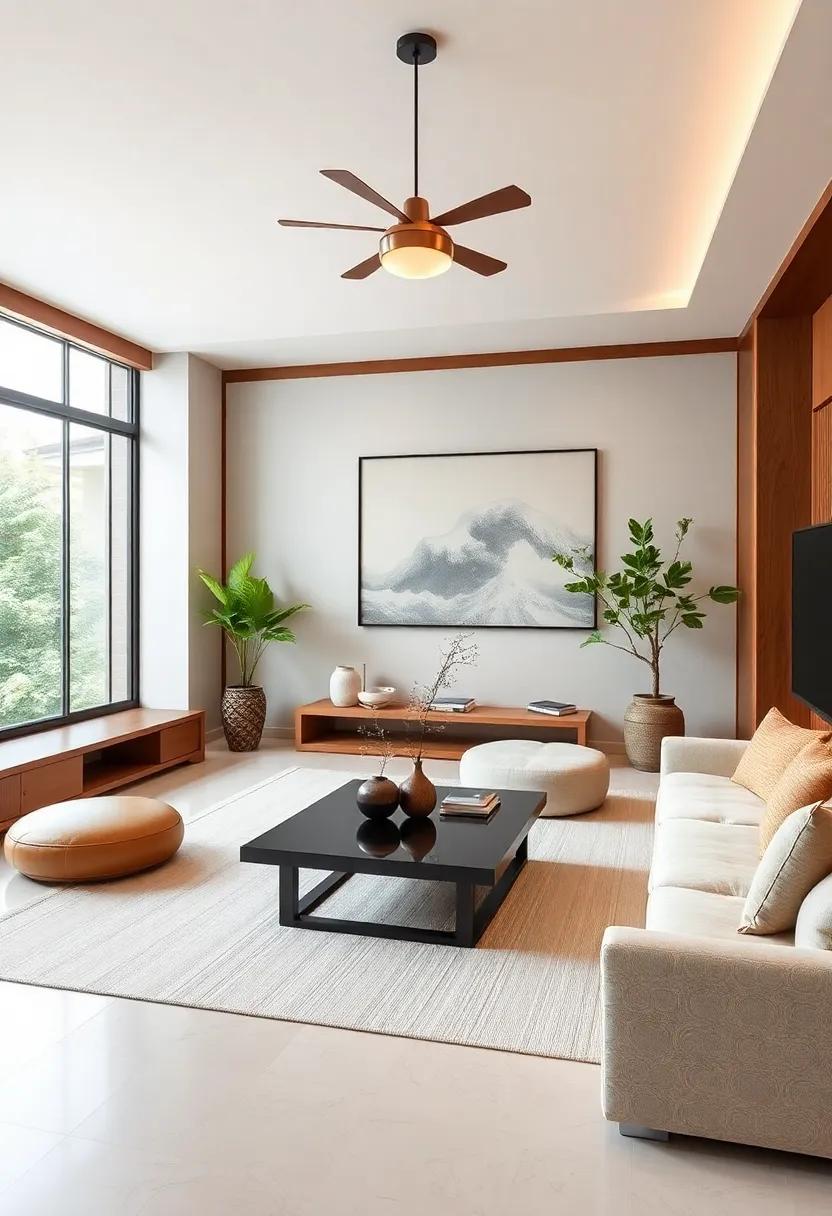
Incorporating traditional Japanese elements into modern spaces is about striking a balance between aesthetics and functionality. Shoji screens, which serve as sliding doors or room dividers, can effortlessly blend privacy with openness, letting soft natural light filter through. Additionally, the use of tatami mats not only provides a unique texture underfoot but also resonates with the calming principles of traditional design. Consider incorporating low-profile furniture, such as a chabudai (low table) and floor cushions, to create an inviting space that encourages relaxation and socializing.
Key decor items can enhance the serenity of your living area. Infuse nature-inspired elements, such as bonsai trees or bamboo arrangements, which connect indoors with the outdoors, embodying the Japanese aesthetic of wabi-sabi. To further elevate your design, explore color palettes rooted in simplicity—soft whites, muted earth tones, and hints of black bring elegance without overwhelming the senses.Here’s a quick overview of essential Japanese decor elements:
| Element | Description |
|---|---|
| Shōji | Sliding doors/screens that allow light while providing privacy. |
| Tatami | Traditional flooring made from rice straw, promoting warmth and comfort. |
| Bonsai | Miniature trees that symbolize harmony and patience. |
| Chabudai | Low table that fosters a relaxed and communal atmosphere. |
For more inspiration on combining modern living with traditional Japanese designs, you can explore resources like Japanese Lifestyle. Adopting these aesthetic principles not only creates a visually pleasing environment but also cultivates a space of mindfulness and tranquility.
Soft Edges: Exploring Rounded Furniture and Fluid Shapes
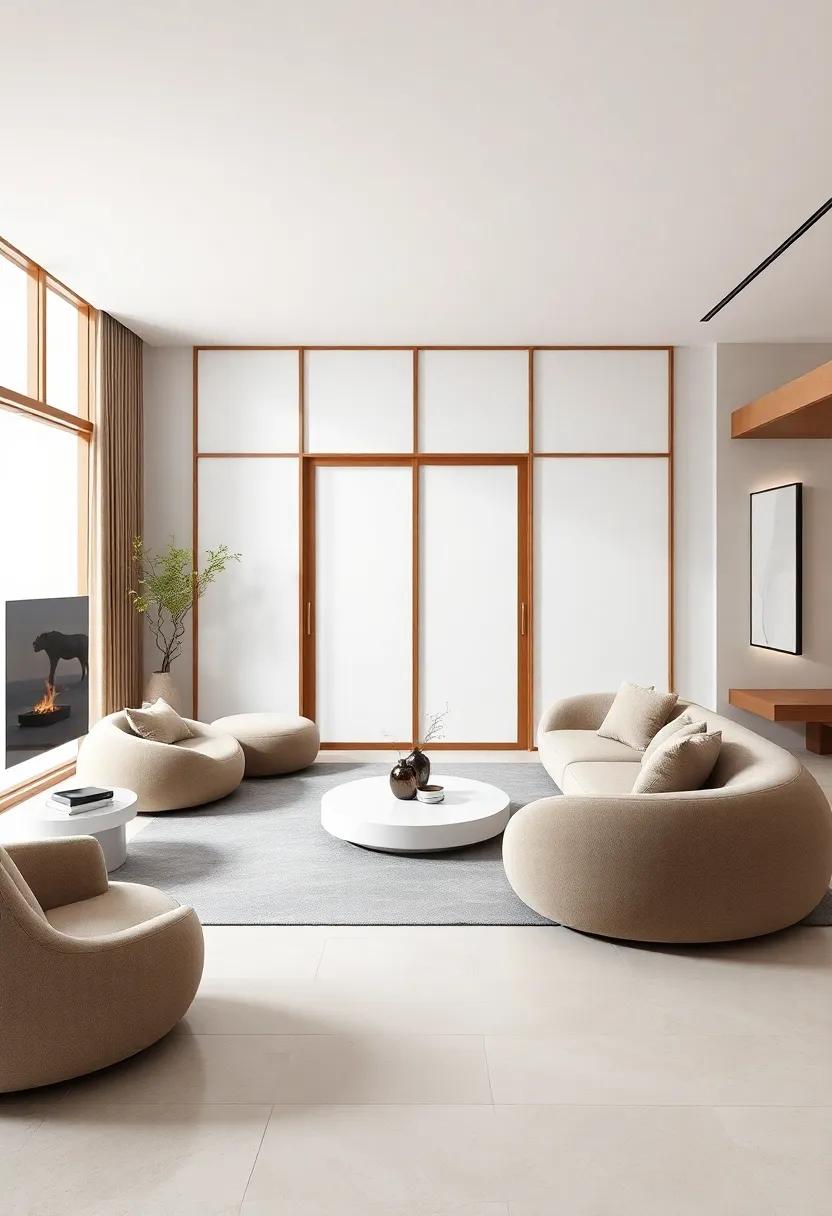
In the realm of design, embracing soft edges and rounded furniture creates an inviting atmosphere that encourages relaxation and mindfulness.The gentle curves of each piece harmonize seamlessly with the serene aesthetic of a Japanese living room, reflecting a balance between modernity and tradition. With materials such as bamboo, wood, and fabric, this organic approach not only softens the space but also fosters a sense of warmth and unity, crucial in Japanese philosophy. Elements like plush ottomans, curved sofas, and round coffee tables serve to enhance the tranquility of the environment, inviting individuals to unwind in their embrace.
Incorporating fluid shapes can be further complemented by the use of natural color palettes that enhance the overall serenity of the room. Shades of earth tones, muted pastels, and soft whites work harmoniously with the design, transcending mere aesthetics and promoting a sense of peace. Consider the following tips for achieving this elegant look:
- Choose furniture pieces with rounded edges to create a gentle flow.
- Opt for low-profile designs that invite relaxation.
- Use natural textiles to promote comfort and warmth.
- Incorporate plants or floral accents to soften hard lines.
Ultimately,the key to a tranquil Japanese living room lies in its harmonious proportions and thoughtful integration of soft elements,showcasing the beauty of simplicity.
For more insights into building a serene space, visit The Spruce.
Creating atmosphere: Utilizing Aroma and Sound to Enhance Serenity
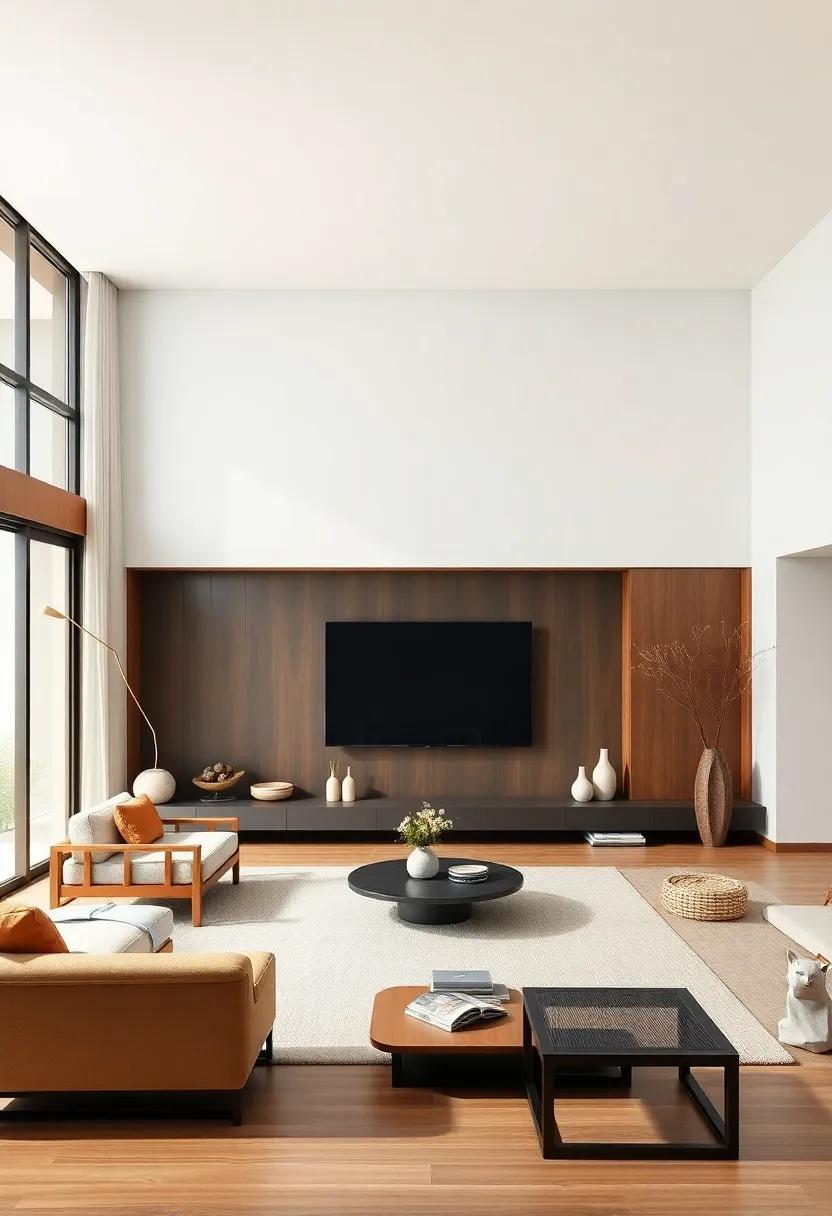
To cultivate a sanctuary of tranquility in your Japanese-inspired living room, the senses of smell and sound can play pivotal roles. Embrace aromatic elements such as essential oils, incense, or scented candles to create a soothing environment. Traditional scents like sandalwood and green tea are renowned for their calming properties and can evoke a sense of peace and grounding. Complement these aromas with the gentle flicker of a candle or the placement of fresh flowers, enhancing both beauty and fragrance within the space.
Incorporating sound further enriches the atmosphere, inviting serenity and introspection. Consider integrating natural sounds such as flowing water, soft wind chimes, or ambient nature soundscapes. These elements can be introduced through a discreet sound system or by simply incorporating a small indoor fountain for added visual and auditory delight. The harmonious blend of aroma and sound fosters a holistic experience, allowing you to retreat from the chaos of daily life and immerse yourself in a serene cocoon. For more ideas on creating calm spaces, visit The Spruce.
Insights and Conclusions
As we close the curtains on our exploration of Japanese living room design, it’s clear that embracing serenity goes beyond mere aesthetics; it is an invitation to cultivate peace within our daily lives. The elegance found in minimalist furnishings, natural elements, and harmonious color palettes encourages us to slow down, reflect, and appreciate the beauty present in simplicity.
By integrating these principles into our own spaces,we can create sanctuaries that not only reflect our personal style but also promote mindfulness and tranquility.As you embark on your journey to reimagine your living space, remember that the essence of Japanese design lies in its adaptability—tailor its elegance to fit your unique vision.May your home become a canvas for serenity, where every detail tells a story and every moment is infused with peace. it’s not just about the architecture of a room, but the feeling it evokes within us—a gentle reminder that, much like Japanese art, life is to be savored with grace and simplicity.
As an Amazon Associate I earn from qualifying purchases.



